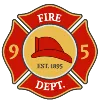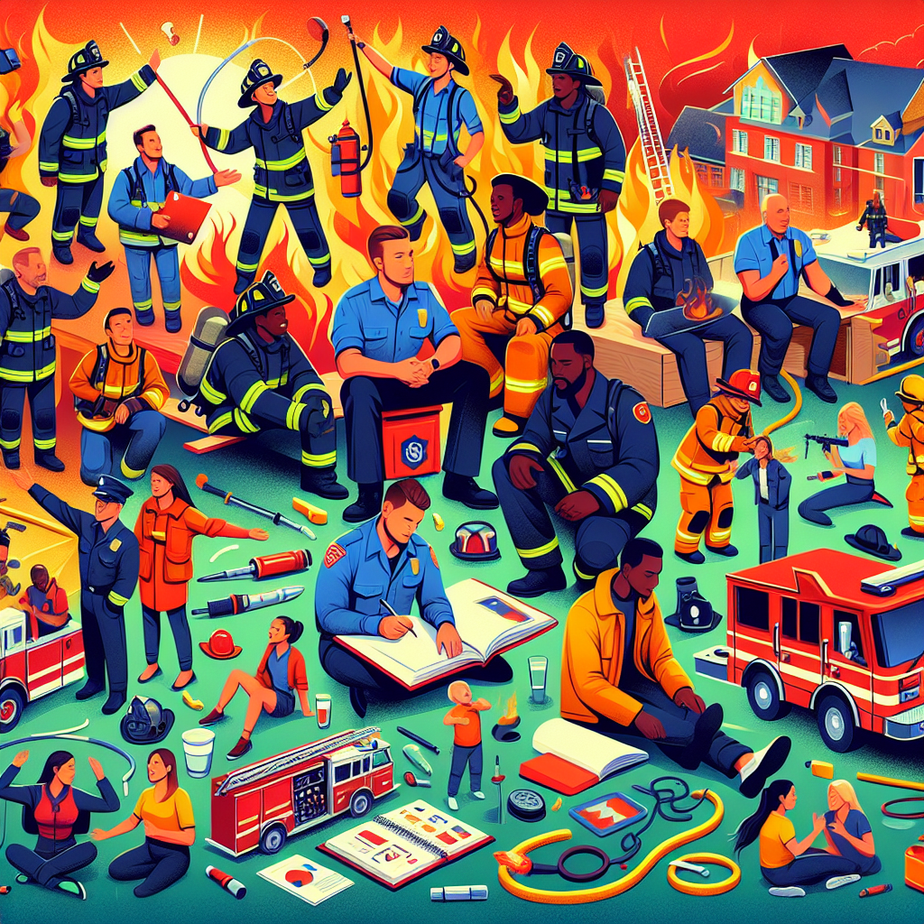Now Reading: Essential Decontamination Procedures to Keep Firefighters Safe and Healthy
- 01
Essential Decontamination Procedures to Keep Firefighters Safe and Healthy
Essential Decontamination Procedures to Keep Firefighters Safe and Healthy

🚒🔥 The good news? Proper decontamination procedures can drastically reduce the risks. Firefighting isn’t just about battling flames—it’s about survival long after the fire is out. Every callout exposes firefighters to dangerous toxins, carcinogens, and contaminants lurking in smoke, soot, and even their own gear. The bad news? These invisible threats don’t just disappear.
So, how do Australia’s bravest stay safe after the fire is out? Let’s dive into the must-know firefighter decontamination steps—and trust us, your lungs and skin will thank you!
The Dirty Truth About Fire Residue 😷
Fire is messy. Really messy. Ever noticed how after a fire, everything (including you) is coated in soot? That’s not just dirt—it’s a toxic cocktail of cancer-causing chemicals, heavy metals, and combustion byproducts. Inhaling or absorbing these nasties over time can lead to serious health complications.
Here’s the reality:
🔥 Studies show firefighters are at a higher risk of developing certain cancers due to prolonged exposure to these contaminants.
– Smoke carries hazardous substances that cling to turnout gear, helmets, boots, and even skin.
🔥 Without proper decontamination, fire residue follows you home—putting not just you, but your loved ones at risk.
Still feeling tough? Good. But being smart is even tougher. Let’s break down the decontamination process every firefighter should follow.
1. The Gross Decon: Rinse Off the Worst 🚿
Before you even think about heading back to the station, it’s time for Gross Decontamination—or as we like to call it, the “hose-down before home.”
🚒 Water Rinse: As soon as the fire is out, grab a hose with clean water and rinse down your gear. It won’t remove everything, but it washes away the worst of the contaminants.
– Soap and Scrub: Using wipes or a scrubbing brush, clean exposed areas of skin, especially the face, neck, and hands. If you look like a chimney sweep—you’re doing it right.
🚒 Swap Out the SCBA Last: Keep your Self-Contained Breathing Apparatus (SCBA) on during this process. Breathing in airborne contaminants after a fire is like taking a deep inhale of trouble.
2. Strip Down the Right Way 🥵👕
Fire is over. You’re drenched in sweat and covered in grime. Time to strip—strategically.
👕 Remove and Bag Contaminated Gear: Do NOT wear your fire gear inside the truck. Store it in sealed bags or designated bins. Toxins love a free ride, and your crew’s health depends on stopping them in their tracks.
👕 Out of Boots, Into Clean Clothes: Keep a spare set of clothes (and shoes) at the station to change into ASAP. Wearing dirty gear home is not a flex—it’s a health hazard.
👕 Clean Hands Before Touching Anything: Contaminants can spread fast. Before handling water bottles, snacks, or even your mobile, wipe down your hands and face.
3. Scrub-a-Dub-Dub: The Shower Rule 🛁🚿
If there’s one rule firefighters swear by, it’s this: DO NOT SKIP THE SHOWER.
🚿 Hot Water? No Thanks! As tempting as a steamy shower sounds, it actually opens your pores, letting contaminants in. Stick with warm water and soap to safely remove toxins.
– Hair Holds More Than Just Style: If you’ve ever walked past a bonfire and smelled smoke in your hair hours later, you get the idea. Shampoo thoroughly.
🚿 Scrub Everything: That includes behind the ears, underarms, and all skin creases. Sweat and soot love to hide in warm places.
Pro Tip: Don’t put on clean clothes from home until after your shower. Otherwise, you’re just rubbing contaminants back onto yourself.
4. Clean Gear, Clean Future 🥽👩🚒
Firefighting gear is designed to protect you—but only if it’s clean. Wearing dirty, soot-covered turnout gear might look cool, but it’s a walking health risk.
🧼 Gear Decon at the Station: Use designated extractors or industrial washers to clean all turnout gear, gloves, and hoods. Never take fire gear home for washing—it spreads contaminants and risks your family’s health.
🧼 Helmet Hygiene Matters: Sweat and soot build up inside helmets. Wipe down the interior and exterior regularly—no one wants forehead cancer.
🧼 Wipe Down the Tools & Truck: Contaminants linger on everything—hoses, breathing apparatus, radios, seats, and steering wheels. A clean truck is a safe truck.
5. Post-Fire Health Checks: Because You’re Worth It 🏥💪
Fire toxins don’t just affect you instantly—they can build up over time. Keeping your health in check isn’t about weakness, it’s about wisdom.
✅ Hydrate, Hydrate, Hydrate: Firefighting is sweaty business. Drinking plenty of water helps flush toxins from your system.
– Watch for Symptoms: Trouble breathing? Skin irritation? Lingering headaches? These could be signs of toxin exposure. Don’t ignore them.
✅ Annual Health Screenings: Make medical check-ups a non-negotiable. Early detection of health issues (like cancer) can save lives.
✅ Mental Health Matters Too: Firefighting takes a toll both physically and mentally. Don’t hesitate to reach out if you’re struggling. A strong crew always has each other’s backs—on and off the fireground.
The Bottom Line: Clean Up to Stay in the Fight 👊🔥
Firefighters fight fire—but they shouldn’t have to battle toxic exposure too. Decontaminating properly after every fire call isn’t just some extra step—it’s the difference between a long, healthy career and unnecessary health risks.
So, embrace the soap, ditch the grime, and remember: a clean firefighter is a safer firefighter.
💬 What’s your go-to decon routine? Share your best tips in the comments below! 🔥🚒





























